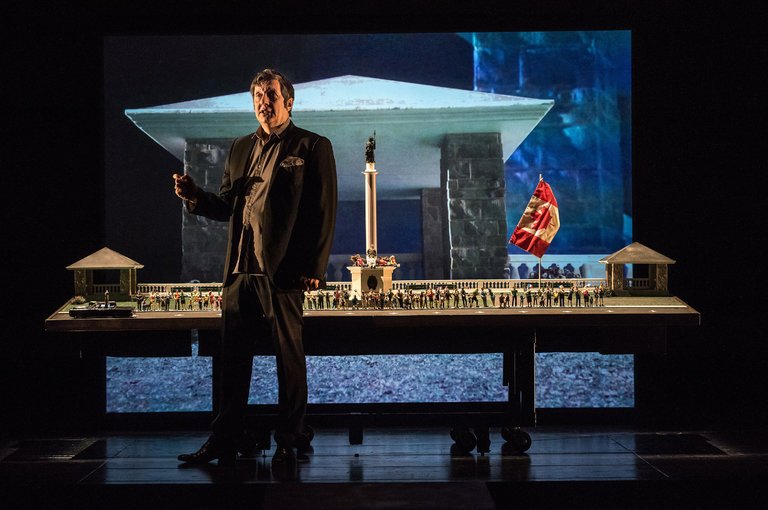Lepage’s 887: An Innovative Exploration into the World of Memory

Reviewed by Natasha Lomonossoff
Ex Machina’s production of Robert Lepage’s recent play 887, showing at the National Arts Centre’s Babs Asper theatre, is a true triumph in innovative storytelling. The technologies of video and image projection work to complement the events and interactions that are recounted onstage in a way that is meaningful rather than cheesy. The program for the show states that “Ex Machina’s creative team believes that the performing arts-dance, opera, music-should be mixed with recorded arts-filmmaking, video art and multimedia.” Upon seeing a performance of 887, one is inclined to agree.
Lepage’s show is primarily an exploration into the peculiarities of memory and why we remember certain things from the distant past while we forget others. The story that informs 887 is that of his childhood in Quebec, which is also intertwined with the political upheavals of the province in the 1960s and 70s. This often dubious connection between the personal and political is probed at by Lepage throughout the course of the play. The playwright’s memories and experiences are re-enacted entirely by him, beginning with his introducing the audience to the neighbours in his family’s apartment at 887 Murray Street in Quebec City. His description of the other families in the building is light and humorous, inducing not a small amount of laughter from the audience. The humorousness which underlines this scene and other similar ones acts as an effective counterweight to the more serious memories (such as the death of Lepage’s grandmother) that are also re-enacted. The re-enactment of all the memories, however, is aided mostly by the superb technical elements of the production, which make the staging of 887 just as noteworthy as its story.
To start with, the revolving set by Sylvain Décarie is one of highly elaborate yet easily mobile proportions: a combination that is not often readily achieved onstage. Acting as the playwright’s book shelves one scene, the inside of an authentic 1960s diner the next, the versatility of this set amazes. The different scenes which the set portrays also provide a genuine sense of atmosphere for the memories that are recalled by Lepage. Working in tandem with the set to provide this atmosphere is lighting of Laurent Routhier and the images and videos of Félix Fradet-Faguy. The lighting is done in hues and scales that are just right for each scene; the lighting during the scene when Lepage tries to call a friend, for instance, is appropriately confined to the onstage sources of the lamp and bookcase, making it both realistic and stylistically minimalistic.
The effect of Fradet-Faguy’s images and videos, which are utilized throughout the play, is nothing short of unique. The image magnification of both the large set and smaller-scale pieces (such as a table set of the Plains of Abraham) gives the audience a closer and more intimate look at the places in which Lepage’s memories take place. Particularly ingenious uses of video include displays of people in the small windows of the 887 apartment building and the appearance of a bartender behind the counter at the old diner.
Through the set, lighting, and digital technologies, 887 is able to fully transport the viewer into both Lepage’s early world and that of 1960s and 70s Quebec. Their ability to do so serves as an excellent example of how technical elements can enhance the presentation of a show, namely in literally bringing a story to life onstage.
887 continues at the NAC until January 27.